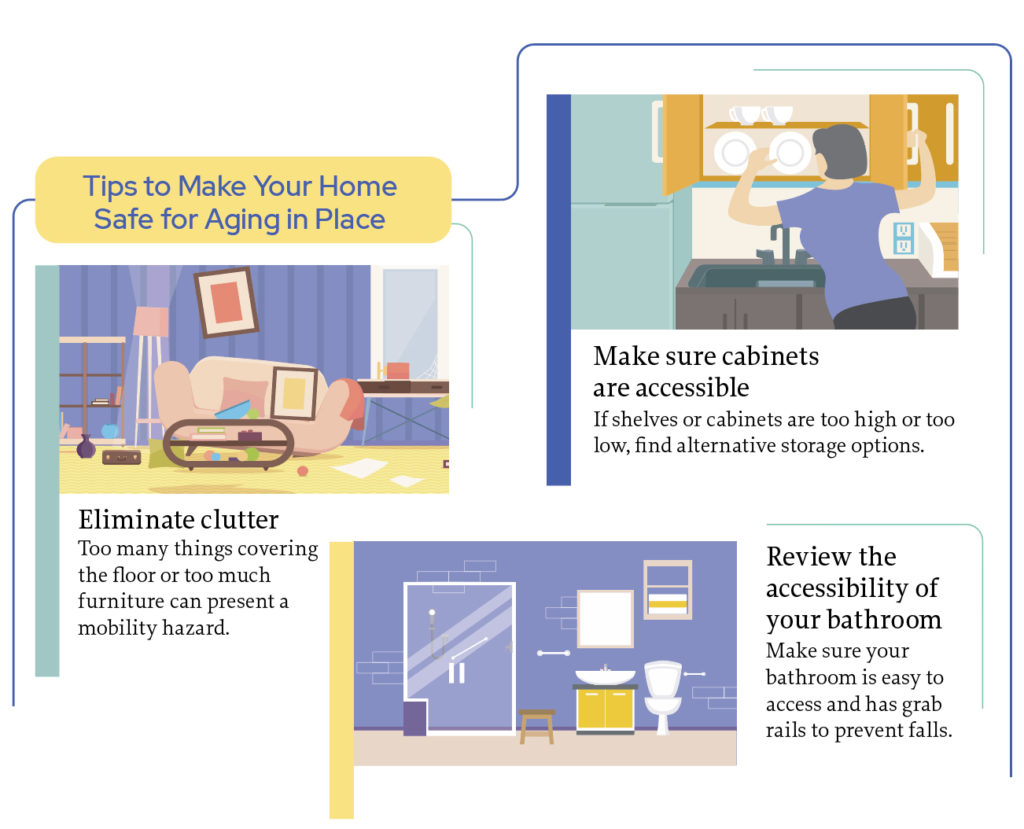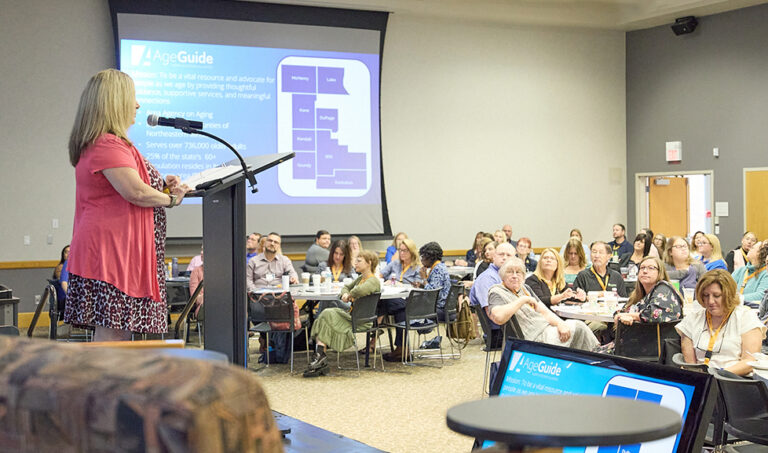
Rosalind is a journalist and author who enjoys going on walks and other adventures with her senior parents.
Explore the ins and outs of aging in place
Some changes are inevitable. We all outgrow things we used to enjoy: music, food, hairstyles, even relationships — but what about our homes? When is it time to switch up and adjust the way we live?
As we grow older, the homes we’ve lived in for decades may not supply the options we need as our bodies and health change. According to a study by Fresenius Medical Care, 65% of adults surveyed preferred to age in the homes and communities in which they currently live. However, only 33% believed that it was possible for them to do so.
The benefits of remaining in your home — called aging in place — include being in familiar surroundings with the independence to live your life as close to the way you’ve always lived it. The drawbacks are the physical limitations and isolation that can occur on your own.
Physical modifications
“Most people want to remain in their homes,” explains Cindy Shaw, owner of Home for Life Advantage in Sugar Grove, which modifies homes to make them more accessible for older adults. But wanting to remain at home isn’t enough. Your home needs to be safe.
“We analyze seniors’ mobility and how they have access to their homes,” she says. “We look at if they are unsteady on their feet, if they suffer from illnesses like Parkinson’s or multiple sclerosis. These things tell us the changes that need to be made for them to remain in their homes.”
As you plan for your retirement years, consider the suitability of your environment, says Rein Puttkammer, director of operations for Home for Life Advantage, which conducts in-home modifications. Ask yourself, “Is this the place I want to stay? What changes can I anticipate?” he says.
Think about making modifications, such as installing grab rails in the shower and toilet area for stability. “For the bathroom, a walk-in shower — with no step protruding out — is important because most falls happen in the bathroom,” Puttkammer says. “You also need enough room for a wheelchair or walker to turn around. Even the height of the toilet matters.” Standard toilets have about 14 inches from the floor to the seat, but comfort height toilets have 17 to 19 inches.
Lindsay Casten, who lives in Naperville, had her right leg amputated and had a left knee replacement last year. She never realized how much home modifications would improve the quality of her life. “Being an amputee, I slipped and fell in the Jacuzzi shower several times,” she says.
Her redesigned bathroom has made a big difference in her well-being. “It has made my life easier. It’s not such a challenge, and I feel more secure with my body now,” she says. “Before, I had to think, ‘How do I reach this? How will I get in and out of the tub?’ I had to constantly think about it, and I was terrified of the bathroom. Now I don’t have to think about it. I feel safe.”
Financial requirements
When making home adjustments, start by mapping out the financial costs of aging in place. Don’t forget to think about technological enhancements to help you live independently, such as health monitors, alarms, doorbell cameras, and smart devices for communication, says Sharon Oberlander, managing director at Merrill Lynch Wealth Management in Chicago.
The top expenses for people over age 65 are housing, transportation, health, and food, according to the Bureau of Labor Statistics.
“In my opinion, the bulk of finances should be spent on housing — including proper renovation to make sure the home is safe and accessible — then healthcare including home care and transportation,” Oberlander says. “The cost of home care will likely grow over time with longevity.”
Oberlander suggests setting up savings plans to help cover these types of expenses.
“A great way to save toward aging in place is contributing to an HSA [health savings account] when you are young and healthy,” she says. “If you have a high-deductible health plan, you can make annual HSA contributions pretax. They can grow over many years tax-free and be used to cover qualified healthcare expenses in your older years.”
To make sure you have finances secured for future living options, Oberlander suggests looking into long-term care insurance plans and retirement vehicles such as annuities and IRAs.
Social considerations
Another major aging-in-place consideration is a strong support system. Plan for consistent check-ins with family, neighbors, or caregivers to make sure your basic needs are met.
When Homewood resident Floyd Webb and his family arranged for his 85-year-old father, a Vietnam veteran, to age in place in his Bollingbrook community, he made sure there was a strong support system. Webb’s father lived in the community for eight years and passed away in April.
“My dad had three strokes and had limited mobility, so we had a home helper come and do the cleaning and keep him company, and also a nurse come to check on his health every month,” Webb says. “I cooked for him and left his meals every few days, and my sister drove him wherever he wanted to go.”
Even with complete mobility, experts say, it’s vital to have a network of people to check on your well-being and to maintain social contact to make aging in place a success.














